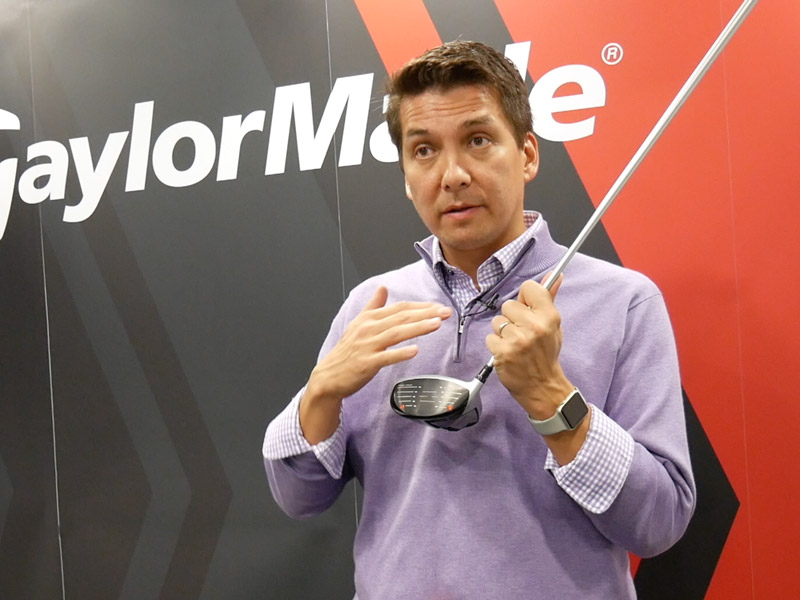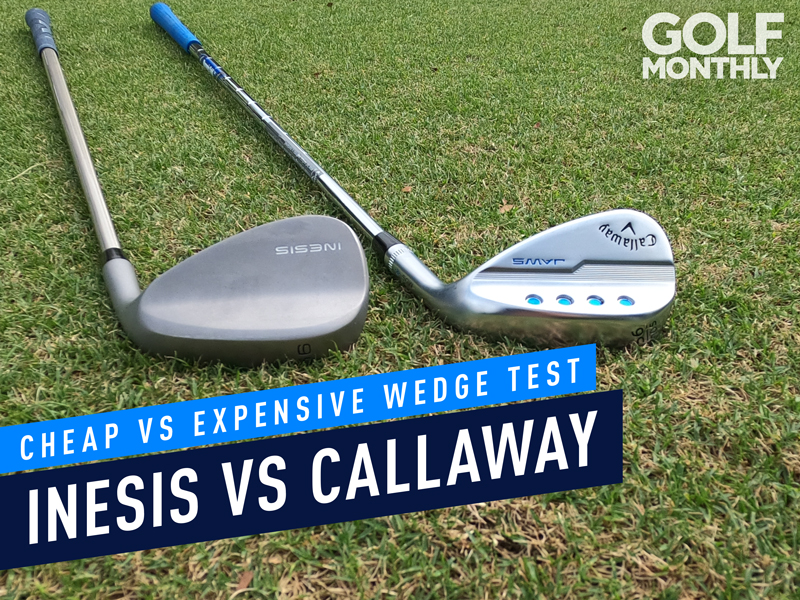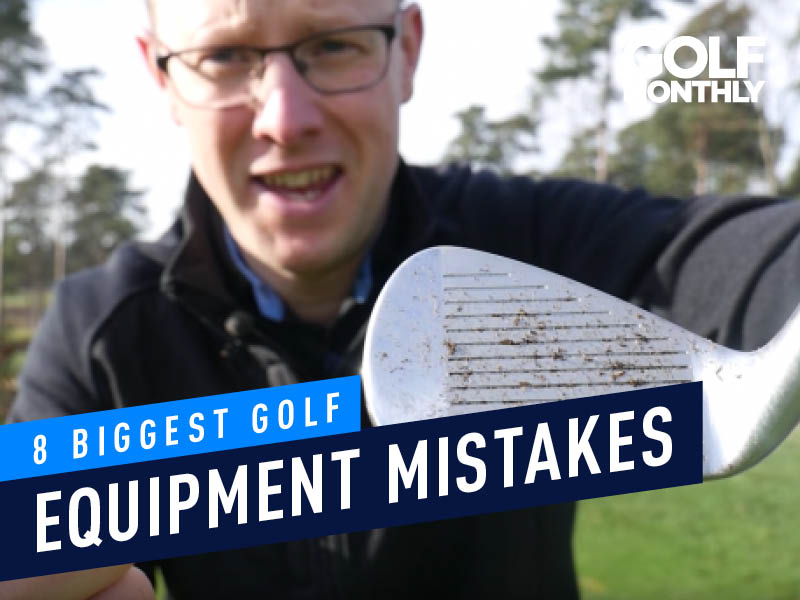TaylorMade Speed Injected Twist Face Explained
TaylorMade's Tomo Bystedt explains how the M5 and M6 driver faces are speed tuned


TaylorMade’s Tomo Bystedt explains how the Speed Injected Twist Face is tuned to create even more ball speed
TaylorMade Speed Injected Twist Face Explained
TaylorMade’s Tomo Bystedt explains how the Speed Injected Twist Face is tuned to create even more ball speed on the new TaylorMade M5 and TaylorMade M6 drivers...
How does the speed tuning process work? After the grinding, painting, polishing etc of the head, right at the end of the process when the head is basically finished we CT test the face. Hopefully they will all be slightly over the limit at this point. We then enter the data into a computer through a programme to determine how much resin needs to be injected into the heel and toe ports. The resin then cures (hardens) and we measure the head again after the speed tuning process to make sure it’s right on the limit.
What CT are you targeting with each head? Obviously we want each head to be as close to the limit as we can comfortably get to. Different CT machines might produce different readings so we need to be careful, it’s not going to be on the number, but it’s going to be a lot closer than the heads we’ve made in the past.
Do you CT test different points on the face or just the centre? Not every club goes through the multi-point test on the face, it’s only about one in 20 heads where we CT test different parts of the face. Most heads just get CT tested on one part of the face.
How does the resin slow down the face? Resin is injected as a liquid but once its cured it hardens and can then resist some of the flexibility in the face. So it’s really just tightening the trampoline effect to reduce the flexibility just enough to make it legal under the Rules of Golf.
Get the Golf Monthly Newsletter
Subscribe to the Golf Monthly newsletter to stay up to date with all the latest tour news, equipment news, reviews, head-to-heads and buyer’s guides from our team of experienced experts.
With different amounts of resin going into each head, will the club weights and draw/fade bias be different in each? No, the draw/fade bias won’t be affected by the speed tuning process and while there will be different amounts of resin in each head, it won’t be enough to affect the swing weight and we have other processes like hot melt to make sure we get the head weights the same.
What about if your ball strikes the face near or on the screws themselves? The durability of the screws was really important for us and we have done a ton of testing and not seen any failures. We’ve if anything over engineered them so they will stay in the club and not affect performance.
Can you take the screws out and alter the resin? It’s actually impossible to reverse engineer this process. The only way to get the resin out would be to destroy the club completely and the ports themselves are impossible to remove as well – you’ll rip the screw threads just even trying to undo them so they’re not going to come out.

Joel has worked in the golf industry for over 15 years covering both instruction and more recently equipment. He now oversees all equipment and video content at Golf Monthly, managing a team of talented and passionate writers and presenters in delivering the most thorough and accurate reviews, buying advice, comparisons and deals to help the reader or viewer find exactly what they are looking for.
One of his career highlights came when covering the 2012 Masters he got to play the sacred Augusta National course on the Monday after the tournament concluded, shooting a respectable 86 with just one par and four birdies. To date, his best ever round of golf is a 5-under 67 back in 2011. He currently plays his golf at Burghley Park Golf Club in Stamford, Lincs, with a handicap index of 3.1.
Joel's current What's In The Bag?
Driver: Titleist GT3, 9°, Fujikura Ventus Black 6 S shaft.
Fairway wood: Titleist TSR3, 15°
Hybrid: Titleist TSi2, 18°
Irons: Titleist T150, 4-PW
Wedges: Titleist Vokey SM10, 50°, 54° and 58°
Putter: LAB Golf DF3
Ball: 2025 Titleist Pro V1x
-
 Chevron Championship Tee Times: Rounds One And Two
Chevron Championship Tee Times: Rounds One And TwoA look at when the players are teeing it up in the opening two rounds of the Chevron Championship - the first women's Major of the year
By Mike Hall
-
 Charley Hull Social Media Video Reveals Brutal Weather Conditions Ahead Of Chevron Championship
Charley Hull Social Media Video Reveals Brutal Weather Conditions Ahead Of Chevron ChampionshipCharley Hull has added a video to her Instagram stories showing strong wind and heavy rain in Texas ahead of the first women's Major of the year
By Mike Hall
-
 Cheap Vs Expensive Putter Test - Inesis Vs Scotty Cameron
Cheap Vs Expensive Putter Test - Inesis Vs Scotty CameronThere is £385 in price difference, but how much difference is there in performance?
By Adrienne Engleman
-
 11 Driving Range Mistakes
11 Driving Range MistakesAvoid these mistakes on the driving range.
By Kit Alexander
-
 7 Easiest Golf Gear Upgrades
7 Easiest Golf Gear UpgradesBy Neil Tappin
-
 Inside The TaylorMade Tour Truck - Behind The Scenes
Inside The TaylorMade Tour Truck - Behind The ScenesTaylorMade's Sam Day shows us around the incredible tour truck
By Golf Monthly
-
 Cheap Vs Expensive Wedge Test - £30 Inesis Vs £149 Callaway
Cheap Vs Expensive Wedge Test - £30 Inesis Vs £149 CallawayHow much does price affect performance?
By Golf Monthly
-
 8 Ways A Launch Monitor Can Help Your Game
8 Ways A Launch Monitor Can Help Your GameWe highlight the 8 ways a launch monitor can help your golf game.
By Joel Tadman
-
 The Coolest Putter In Golf? Evnroll ER2B Gravity Grip Putter Review
The Coolest Putter In Golf? Evnroll ER2B Gravity Grip Putter ReviewGolf Monthly Editor Mike Harris tests out Evnroll's ER2B putter - is it the coolest model in golf?
By Golf Monthly
-
 8 Biggest Golf Equipment Mistakes
8 Biggest Golf Equipment MistakesWe list 8 of the biggest equipment mistakes to help you make the right choices for your game
By Elliott Heath